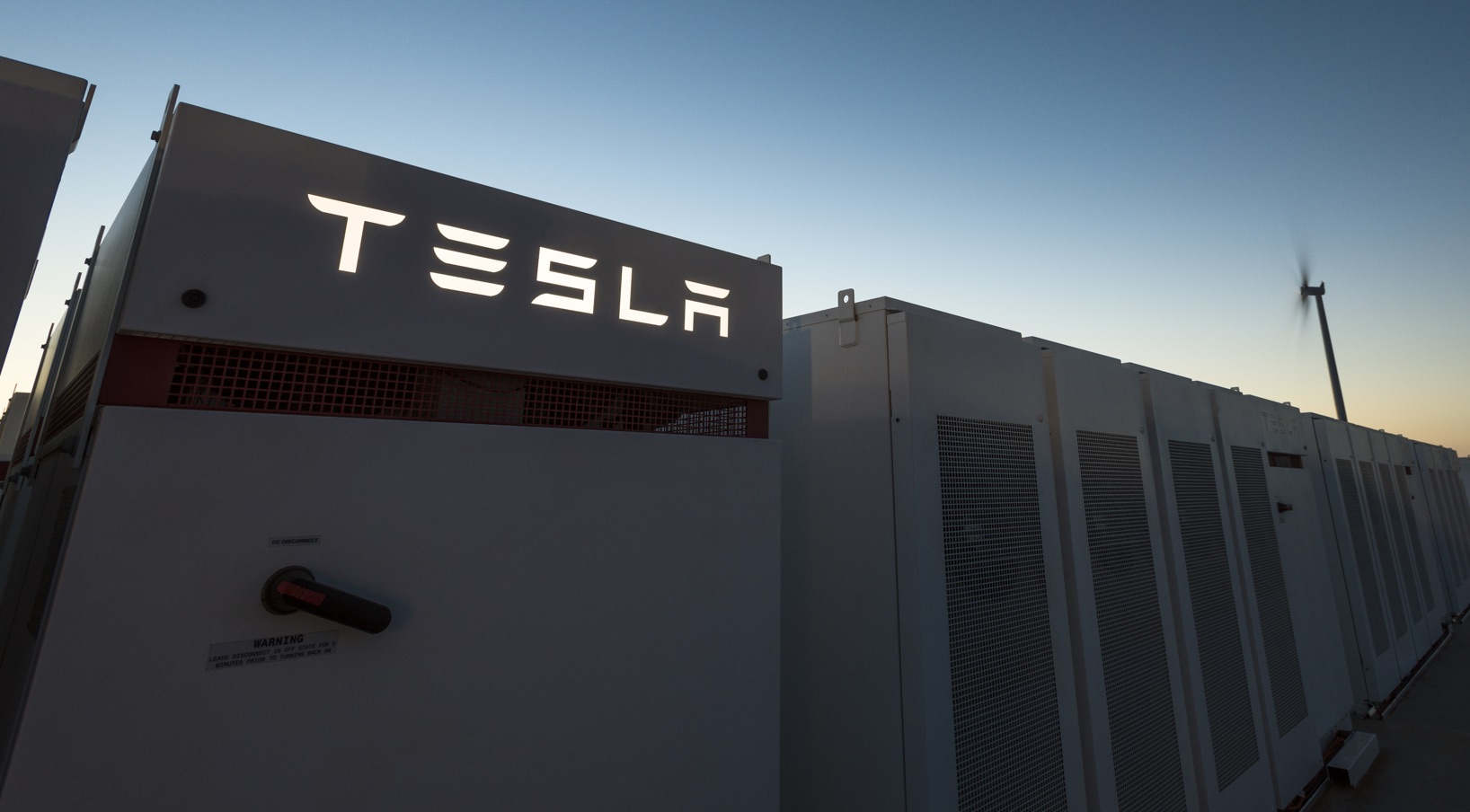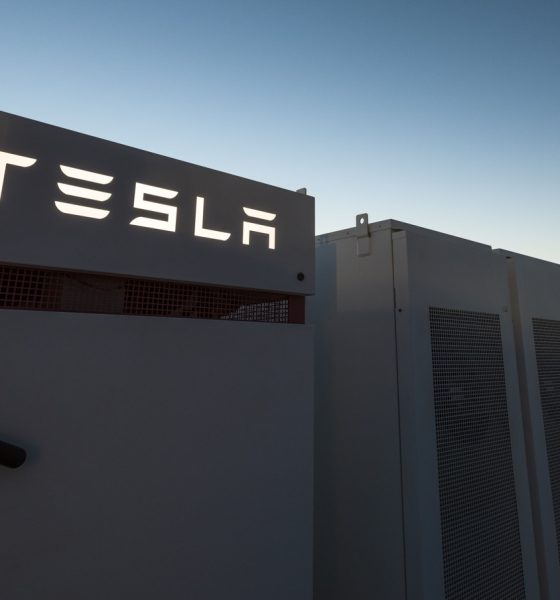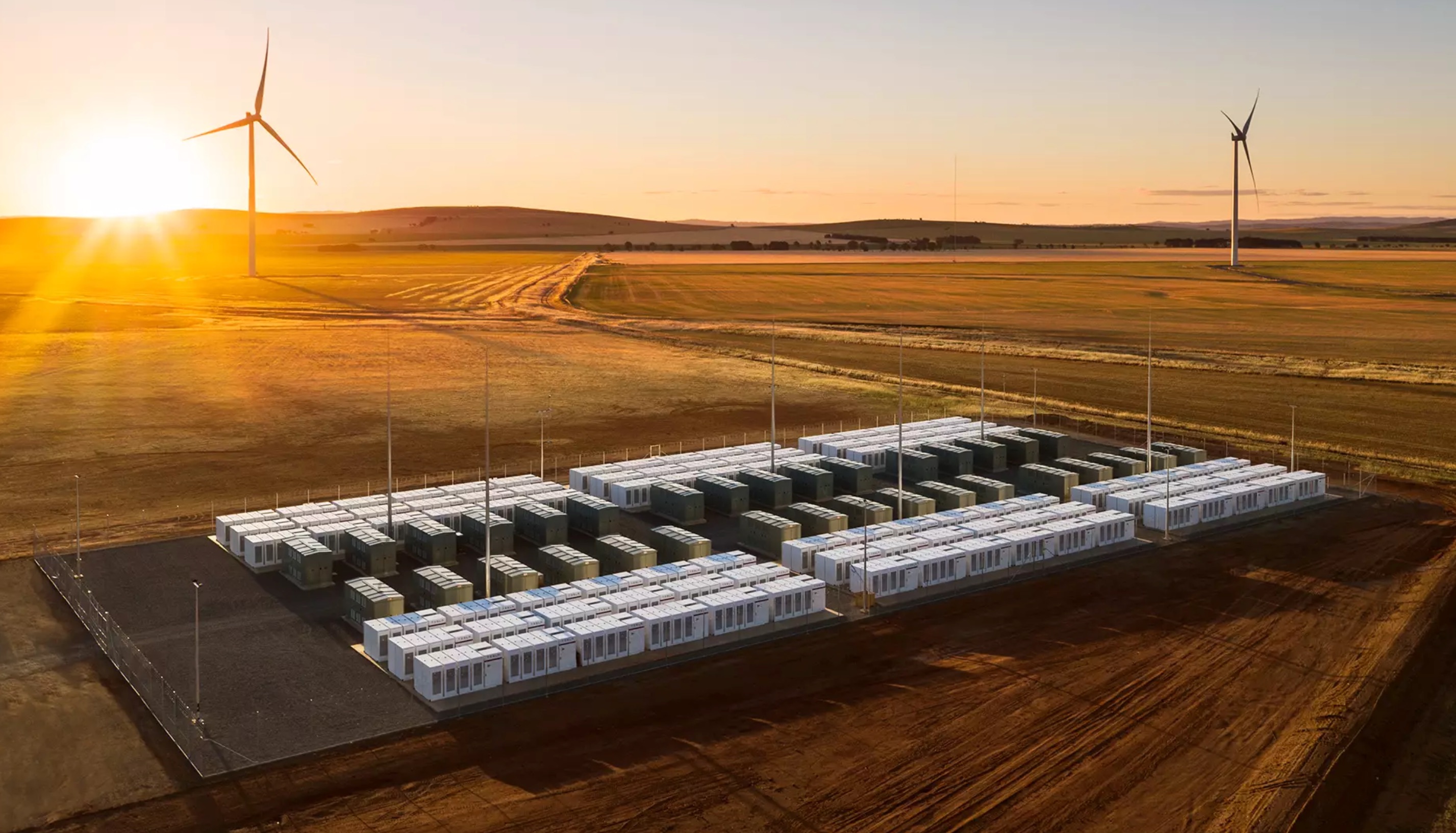

Energy
Tesla’s big battery in Australia is starting an energy storage movement
Tesla’s big battery in South Australia, officially known as the Hornsdale Power Reserve, has been supporting the region’s beleaguered energy grid since it went online last year. Over the past months, the Powerpack installation has been proving that large-scale battery storage solutions could be preferable alternatives to fossil fuel-powered backup plants.
Almost two years ago, SA experienced a state-wide blackout that highlighted the region’s need for a facility that can provide backup to the grid. A Twitter conversation between two billionaires, Australian software pioneer Michael Cannon-Brookes and Tesla founder Elon Musk, ultimately started the initiative that would eventually become the massive Powerpack farm. Musk even wagered that Tesla could complete the 100MW/129MWh facility in 100 days or it would be free.
The timeline was ambitious, and unsurprisingly, it attracted a slew of critics, some of whom claimed that batteries could not be built that big or that quick. In the same month as Elon Musk and Michael Cannon-Brookes’ conversation on Twitter, for example, the Australian Energy Market Operator (AEMO) issued a report suggesting that the maximum size of a utility-scale lithium-ion battery would be 1MW. The report was published not long after then-AEMO chairman Tony Marxsen stated that utility-scale batteries were about 10 to 20 years away from providing meaningful contributions to the grid. The Minerals Council of Australia, the country’s primary coal lobby, also suggested that a large-scale battery installation would take at least one year to design and two years to build.
Tesla completed the 100MW/129MWh Powerpack farm within Elon Musk’s ambitious timeline, six months after the “billionaire tweets” and just 62 days after Telsa signed the connection agreement with the market operator and network owner. Even as the battery started its operations, though, the facility still attracted a notable number of critics. Prime minister Scott Morrison ridiculed the Hornsdale Power Reserve, comparing it to tourist attractions such as the Big Banana in New South Wales. Resources Minister Matt Canavan also dubbed the big battery as the “Kim Kardashian” of the energy market.
Amidst the skepticism, the SA big battery has proven its worth many times over. Even before its official launch, the Powerpack farm was called into action, injecting 70MW of stored wind energy into the market. Two weeks after it was officially opened, it stepped in when a unit at Loy Yang coal generator in Victoria tripped. Just last month, twin lightning strikes caused widespread outages in three states, and the Queensland and South Australia grids had to be islanded. Queensland’s backup hydro plants and coal generators struggled to respond to the unexpected event, while South Australia, supported by the Tesla Powerpack farm, emerged from the incident unscathed.

The Hornsdale Power Reserve and its success so far has encouraged a series of similar battery storage projects in Australia. The Ganawarra battery, a Tesla installation paired directly with a massive solar farm, is set to start operations soon. Next to the Wattle Point wind farm, the Dalrymple North battery is expected to go online soon as well. Other battery storage installations are also set to be launched in Ballarat, Whyalla, and in Queensland. And these are just large-scale battery solutions. Initiatives such as the South Australia Virtual Power Plant, which would dwarf than the Hornsdale Power Reserve when completed, have also been given the green light.
It won’t be an overstatement to say that the Tesla big battery has become a project, possibly even the project, which ultimately proved that battery storage is an ideal alternative for fossil fuel-powered backup plants. This was emphasized earlier this month by Tesla CTO JB Straubel, who noted that the improvements in battery storage are starting to affect the market for traditional fossil fuel-powered peaker plants. In an interview with the San Francisco Chronicle, Straubel stated that even at this point, large battery installations are “already outcompeting natural gas peaker plants.”
Tesla Energy usually takes a backseat compared to the company’s electric car business in terms of news coverage, but its progress in battery storage has been notable. In the first six months of 2018 alone, Tesla’s deployment of stationary batteries, which are designed to supply power to residential homes, businesses, and power grids, surged 450%. During the 2018 Annual Shareholder Meeting, Elon Musk also announced that it is aiming to hit a cost of $100 per kWh at the pack level. Considering its recent growth and the success of high-profile projects like the Hornsdale Power Reserve, it won’t be surprising if Tesla Energy eventually catches up and surpasses Tesla’s electric car business in size.

Energy
Tesla starts hiring efforts for Texas Megafactory
Tesla’s Brookshire site is expected to produce 10,000 Megapacks annually, equal to 40 gigawatt hours of energy storage.

Tesla has officially begun hiring for its new $200 million Megafactory in Brookshire, Texas, a manufacturing hub expected to employ 1,500 people by 2028. The facility, which will build Tesla’s grid-scale Megapack batteries, is part of the company’s growing energy storage footprint.
Tesla’s hiring efforts for the Texas Megafactory are hinted at by the job openings currently active on the company’s Careers website.
Tesla’s Texas Megafactory
Tesla’s Brookshire site is expected to produce 10,000 Megapacks annually, equal to 40 gigawatt hours of energy storage, similar to the Lathrop Megafactory in California. Tesla’s Careers website currently lists over 30 job openings for the site, from engineers, welders, and project managers. Each of the openings is listed for Brookshire, Texas.
The company has leased two buildings in Empire West Business Park, with over $194 million in combined property and equipment investment. Tesla’s agreement with Waller County includes a 60% property tax abatement, contingent on meeting employment benchmarks: 375 jobs by 2026, 750 by 2027, and 1,500 by 2028, as noted in a report from the Houston Business Journal. Tesla is required to employ at least 1,500 workers in the facility through the rest of the 10-year abatement period.
Tesla’s clean energy boom
City officials have stated that Tesla’s arrival marks a turning point for the Texas city, as it highlights a shift from logistics to advanced clean energy manufacturing. Ramiro Bautista from Brookshire’s economic development office, highlighted this in a comment to the Journal.
“(Tesla) has great-paying jobs. Not just that, but the advanced manufacturing (and) clean energy is coming to the area,” he said. “So it’s not just your normal logistics manufacturing. This is advanced manufacturing coming to this area, and this brings a different type of job and investment into the local economy.”
Energy
Tesla and Samsung SDI in talks over new US battery storage deal: report
The update was related by industry sources and initially reported by South Korean news outlets.

Recent reports have suggested that Tesla and Samsung SDI are in talks over a potential partnership to supply batteries for large-scale energy storage systems (ESS).
The update was related by industry sources and initially reported by South Korean news outlets.
ESS batteries to be built at Samsung’s Indiana plant
As noted in a report from Korea JoongAng Daily, the demand for energy storage systems has been growing rapidly in North America, thanks in no small part to the surge in AI investments across numerous companies. With this in mind, Tesla has reportedly approached Samsung SDI about a potential battery supply deal.
The deal is reportedly worth over 3 trillion Korean won (approximately $2.11 billion) and will span three years, according to The Korea Global Economic Daily. A battery supply deal with Samsung SDI could make sense for Tesla as the company already has a grid-scale battery, the Megapack, which is perfect for industrial use. Samsung SDI could simply supply cells for the EV maker.
Production of the batteries would reportedly take place at Samsung SDI’s joint venture factory with Stellantis in Indiana, which is currently under construction. Samsung SDI recently announced plans to use part of that plant’s EV lines to produce cells for ESS, with a targeted capacity of 30 GWh by the end of next year.
Tesla and Samsung’s partnership
At present, only a handful of manufacturers, including Korea’s LG Energy Solution, Samsung SDI, SK On, and Japan’s Panasonic, are capable of producing energy storage-scale batteries domestically in the United States. A Samsung SDI official issued a comment about the matter, stating, “Nothing has been finalized regarding cooperation with Tesla.”
The possible energy storage system deal adds another layer to Tesla’s growing collaboration with Samsung, which is already in line as a partner in the upcoming production of Tesla’s AI5 and AI6 chips. Early sample manufacturing of the AI6 is expected to begin in South Korea, with mass production slated for Samsung’s Texas-based Taylor foundry when it starts operations.
The AI6 chip will power Tesla’s next wave of high-volume projects, including the Optimus humanoid robot and the autonomous Cybercab service. Musk has called the partnership with Samsung a “real collaboration,” adding that he personally plans to “walk the line” at the Taylor facility to speed up progress.
Energy
Tesla VP hints at Solar Roof comeback with Giga New York push
The comments hint at possible renewed life for the Solar Roof program, which has seen years of slow growth since its 2016 unveiling.

Tesla’s long-awaited and way underrated Solar Roof may finally be getting its moment. During the company’s Q3 2025 earnings call, Vice President of Energy Engineering Michael Snyder revealed that production of a new residential solar panel has started at Tesla’s Buffalo, New York facility, with shipments to customers beginning in the first quarter of 2026.
The comments hint at possible renewed life for the Solar Roof program, which has seen years of slow growth since its 2016 unveiling.
Tesla Energy’s strong demand
Responding to an investor question about Tesla’s energy backlog, Snyder said demand for Megapack and Powerwall continues to be “really strong” into next year. He also noted positive customer feedback for the company’s new Megablock product, which is expected to start shipping from Houston in 2026.
“We’re seeing remarkable growth in the demand for AI and data center applications as hyperscalers and utilities have seen the versatility of the Megapack product. It increases reliability and relieves grid constraints,” he said.
Snyder also highlighted a “surge in residential solar demand in the US,” attributing the spike to recent policy changes that incentivize home installations. Tesla expects this trend to continue into 2026, helped by the rollout of a new solar lease product that makes adoption more affordable for homeowners.
Possible Solar Roof revival?
Perhaps the most intriguing part of Snyder’s remarks, however, was Tesla’s move to begin production of its “residential solar panel” in Buffalo, New York. He described the new panels as having “industry-leading aesthetics” and shape performance, language Tesla has used to market its Solar Roof tiles in the past.
“We also began production of our Tesla residential solar panel in our Buffalo factory, and we will be shipping that to customers starting Q1. The panel has industry-leading aesthetics and shape performance and demonstrates our continued commitment to US manufacturing,” Snyder said during the Q3 2025 earnings call.
Snyder did not explicitly name the product, though his reference to aesthetics has fueled speculation that Tesla may finally be preparing a large-scale and serious rollout of its Solar Roof line.
Originally unveiled in 2016, the Solar Roof was intended to transform rooftops into clean energy generators without compromising on design. However, despite early enthusiasm, production and installation volumes have remained limited for years. In 2023, a report from Wood Mackenzie claimed that there were only 3,000 operational Solar Roof installations across the United States at the time, far below forecasts. In response, the official Tesla Energy account on X stated that the report was “incorrect by a large margin.”









